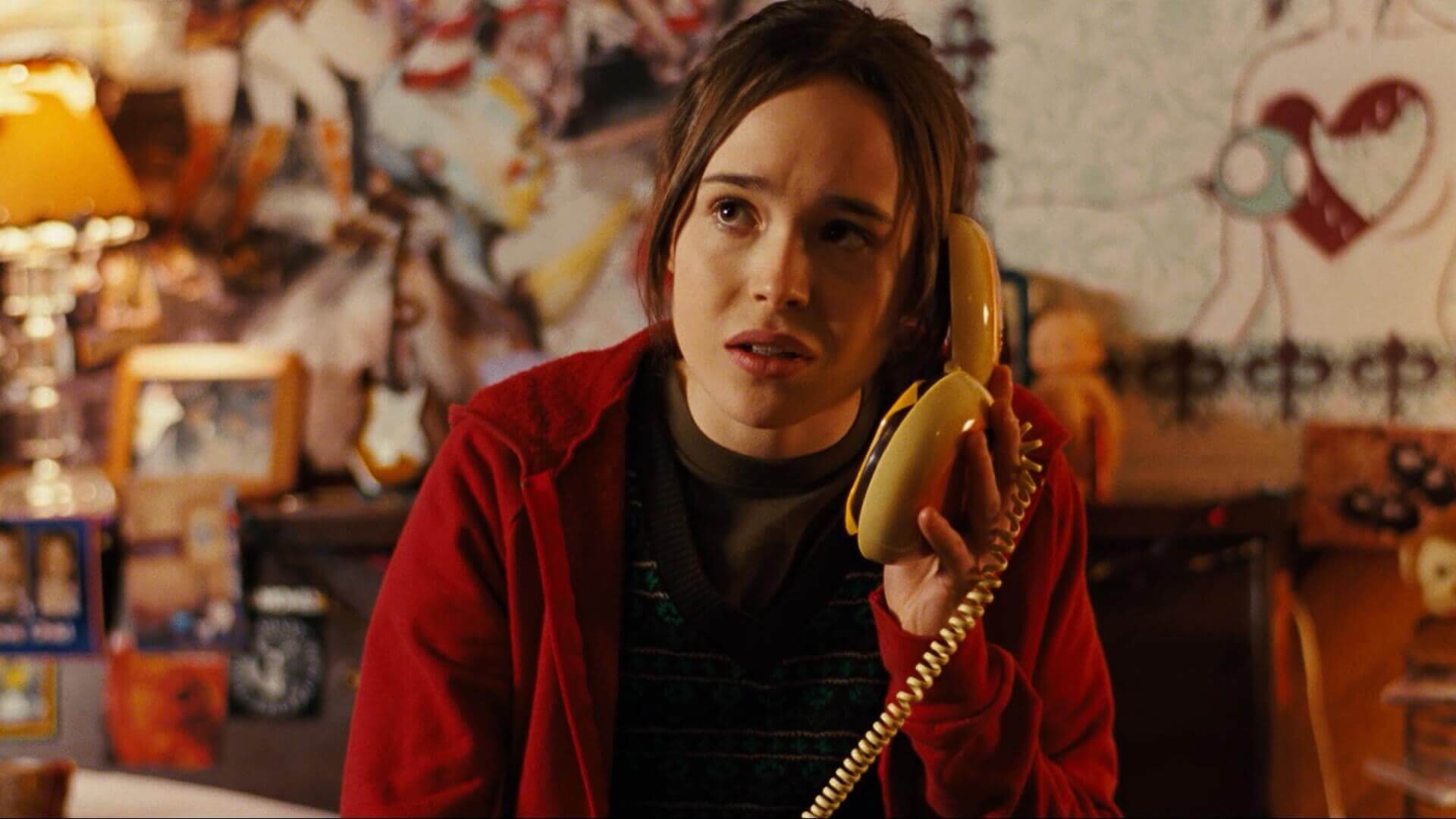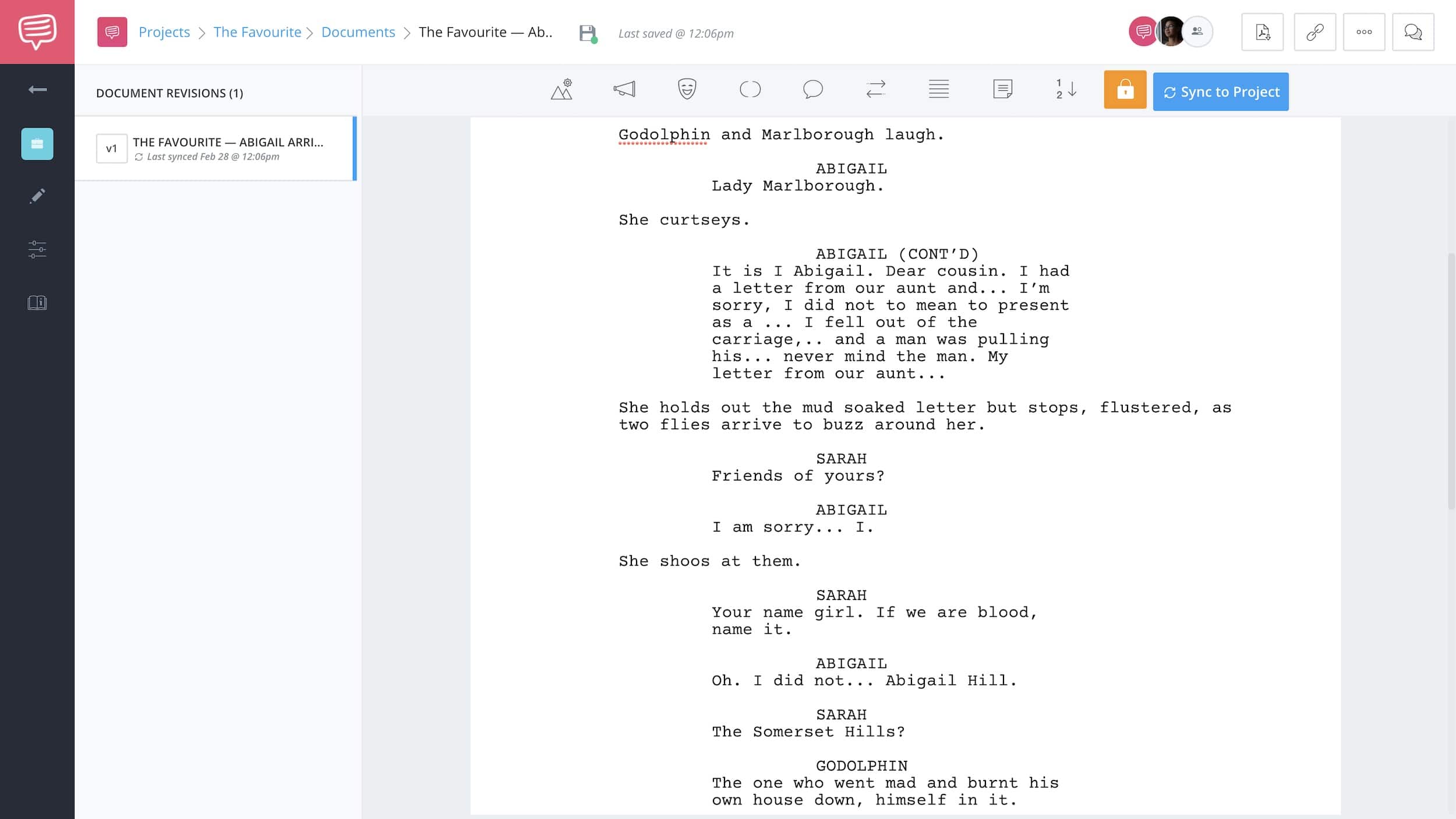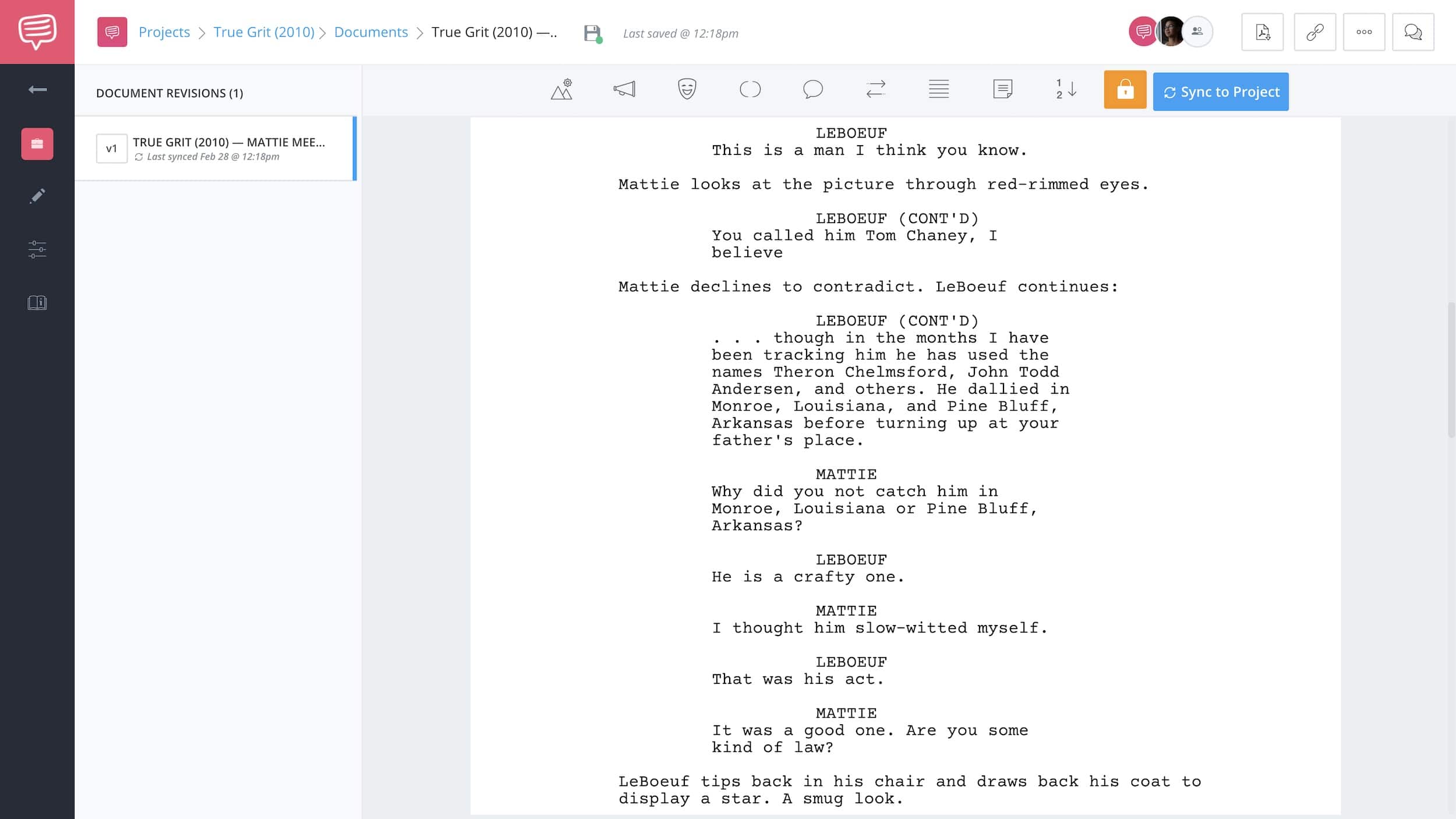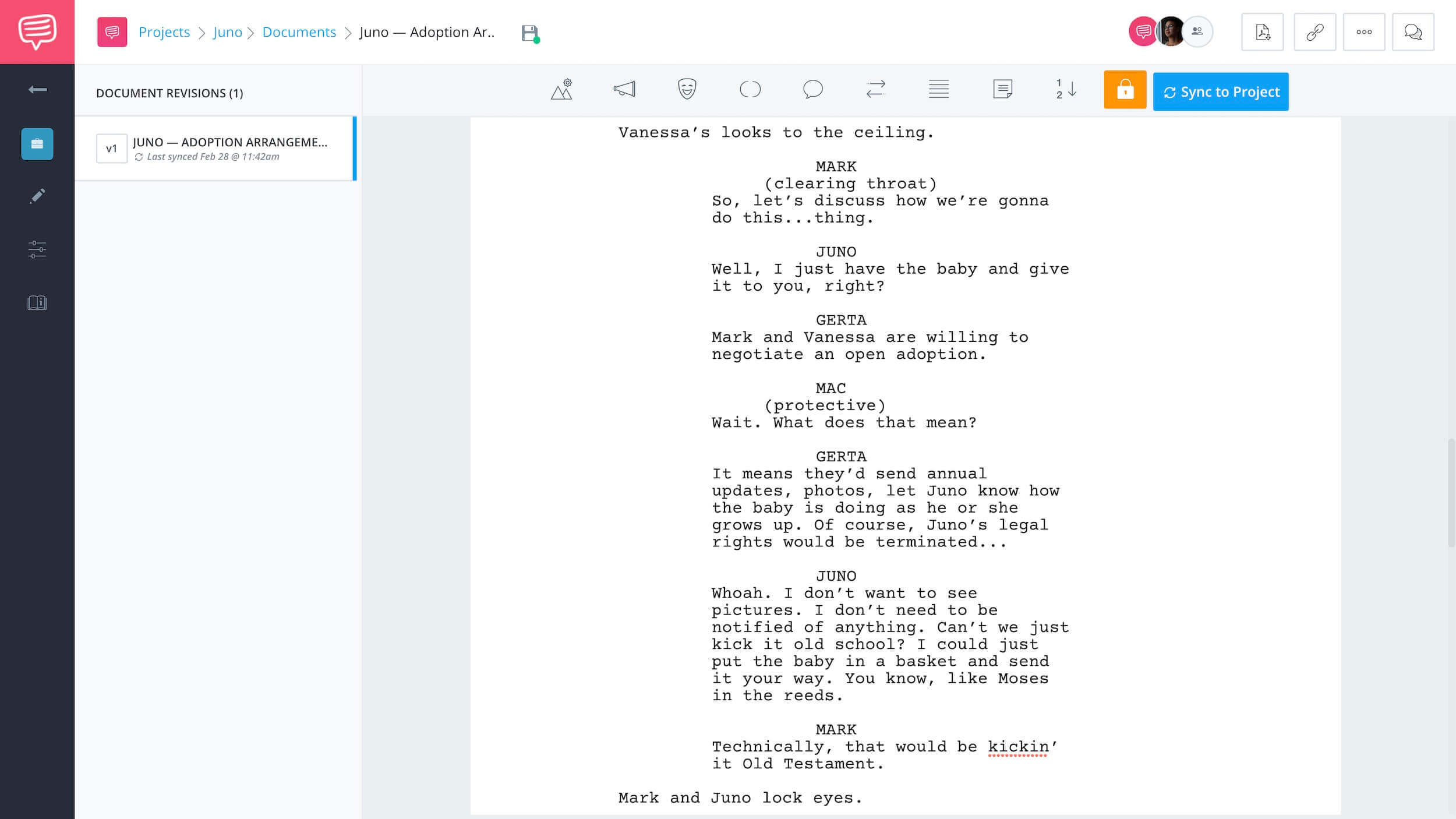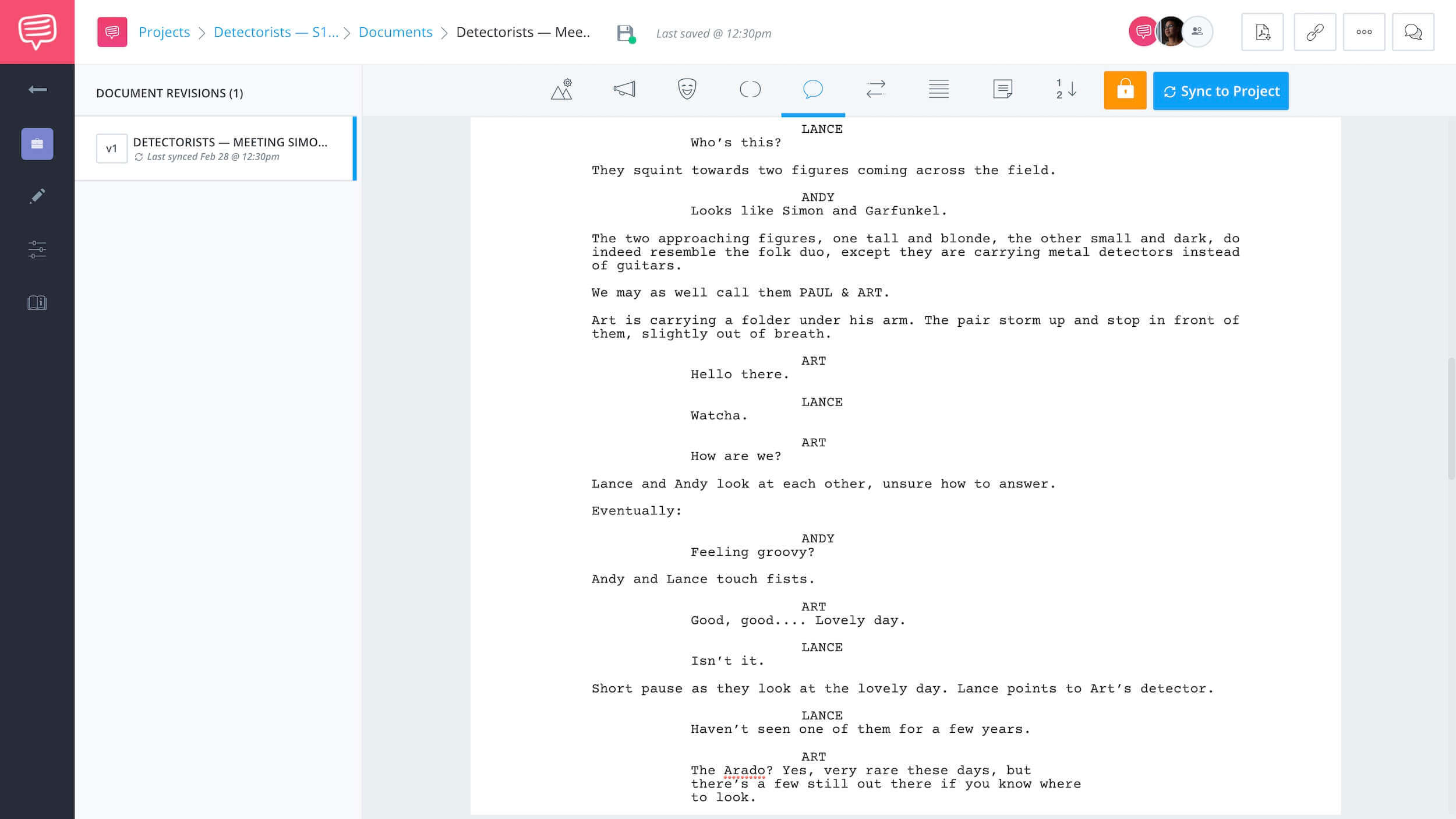Writing dialogue is the best part of writing a screenplay. It’s the part of the writing where you get to be an actor for a while and cast powerful magic spells, or save an innocent man from prison, or lead an army into battle – at least in your mind.
But dialogue is also something a lot of screenwriters struggle with. So, in this post we’re going to talk about how to write realistic, natural-sounding dialogue. We’ll give you some good examples from different genres, and we’ll show you how to properly format dialogue using the StudioBinder’s free screenwriting software.
1
Dialogue Reflects Culture
Screenwriting Tips
Screenwriting Cultural Dialogue
Culture and dialogue
You’ve probably already learned that when writing screenplays, the dialogue should reveal more insight into the characters. We learn about a character by both the things she says and the things other characters say about her. But a huge facet of any character is the environment and times they live in - in a word, their culture.
Culture describes the accepted ways people interact with each other, and the way people speak comes directly from their culture. Culture can be as specific as immediate family, church, or workplace; or culture can simply refer to the social norms and customs of the region and era.
Think of any period film. We get a lot of our clues about the era from the set decoration and costumes. But we get a sense of the culture by the way the characters speak.
Take, for example, The Favourite which is set in the royal court of Queen Anne. The culture at court is one where maintaining social rank and favor with the queen are constantly, quietly battled over by everyone around her.
When Abigail Hill, a lady born of noble rank but now impoverished and destitute, shows up at the queen’s palace asking for a job from her cousin - who just happens to be the queen’s best friend - the battle for rank becomes exponentially higher. Here’s how the scene looks on StudioBinder's screenwriting software:
Scene 9 • Abigail Arrives • Read Full Scene
The language is, by our standards, formal and always civil, even when delivering the most cutting remark.
There is also a clear linguistic boundary between social groups. Servants use a local dialect, for example, while the nobility, who travel frequently between residences, have a less regional way of speaking.
In the filmed scene, we can hear Abigail code switching from the coarser language of her current low social station to the quiet erudition of her upbringing the moment she realizes that she has been led to the queen’s private drawing room.
The Favourite • This Mud Stinks
Another example is the Coen Brothers’ True Grit. Again, the dialogue is much more formal and, by our standards, kinda bulky. But it gives insight about how people are expected to treat each other, even in the context of “the wild west”.
In True Grit, young Mattie Ross hires Rooster Cogburn, a crusty old booze-hound of a U.S. marshal, to find her father’s murderer and bring him to justice. A Texas Ranger called LeBoeuf is after the same killer for a different murder, and wants to join their search.
Scene 21 • Mattie Meets LaBoeuf • Read Full Scene
Notice that, despite being just a teenager and totally vulnerable to the grown man LeBoeuf, young Mattie keeps him in his place by mere words. She can do this because of the cultural expectations of “a simple farm girl”.
Mattie’s subversion of those expectations blindsides everyone she interacts with, especially LeBoeuf, and is what creates comedic moments in the film.
True Grit • Meeting LeBoeuf
Let’s look at one more example. This time, we have a story set in the authoritarian world of Soviet Russia.
HBO’s series Chernobyl is based on an actual nuclear reactor explosion that happened in the Soviet Union in 1986. Writer Craig Mazin did meticulous research on the sequence of events surrounding the explosion, as well as the way people spoke to each other during the Soviet era.
In this scene, through her own professional knowledge and contacts, Ulana Khomyuk has broken the rigid Communist Party protocols and taken it upon herself, at great personal risk, to confront the local government official about what needs to be done for ordinary citizens following the Chernobyl disaster.
Chernobyl • Get out of Minsk
The dialogue in Chernobyl reflects a world where people assume they are being observed and recorded at all times. Therefore subtext does all the heavy lifting in almost any conversation.
So what makes the dialogue from these examples realistic?
Research.
We have plenty of historical documents like letters, diaries, and newspapers to tell us the way people spoke. And in the case of Chernobyl, which happened just a generation ago, we also have video and audio recordings, along with living memory, to tell us what the culture was like and how people talked in a world where the KGB was always listening.
So, whether you’re writing a historical drama like Pride and Prejudice or a fantasy set in a fictional world like Game of Thrones, when dialogue reflects the culture of the setting, it automatically sounds natural.2
Personalize Dialogue
Personalized Writing
Screenwriting Personal Dialogue
Let's get personal
Do. Or do not. There is no try.
Yoda is one of the most memorable characters ever written. Not because of his pocket-sized stature and goblin green chihuahua ears, but because of the way he talks.
Even people who have never seen any of the Star Wars films recognize Yoda-speak when they hear it.
Master Yoda's Sage Adage
While dialogue doesn’t have to be Yoda-level unique, each character should still have her own voice. Take Juno MacGuff.
Juno is a high school junior who, upon learning she is pregnant, quickly decides to give up her baby to people who actually want a child. She finds a couple she believes are the perfect would-be parents and makes formal adoption arrangements with them.
Scene 14 • Adoption Arrangement • Read Full Scene
The success of Juno can be attributed almost entirely to the dialogue screenwriter Diablo Cody crafted for the adorkable teen mom.
Juno • Meet the Parents
There’s actually an old screenwriting guideline that says anyone reading your script should be able to tell which of your characters is speaking without looking at the name. Because, just as people have behavioral traits, they also have verbal ones.
Dr. Who is entirely dependent on this notion. You can’t have a character who is portrayed by a different actor every few series unless people can immediately recognize the title character.Dr Who • 13th Doctor
Now, that clip is a lot more meaningful if you’re a fan of the show. But it shows that, even when The Doctor can’t recognize her (or him) self, the audience sure can just by the way she speaks.
So, when you’re writing dialogue, try to give each of your characters something about their speech that sets them apart from the others. But also remember that your dialogue is going to get a lot of help from the performance the actors bring, too. Here are some awesome examples of great actors delivering the most iconic movie lines in cinema.
3
Listen to Conversations
Screenwriting From Experiences
Screenwriting From Real Life
Expose yourself to real conversations
If you’re working on a story that takes place now, in our world, the best way to write realistic dialogue is to simply listen to people talking. Real conversations are the most abundant source material you’ll ever have access to. Even in your own social circles, there are undoubtedly things you and your friends say or talk about that you can borrow as dialogue for your characters.
A great example is writer/director Mackenzie Crook’s Detectorists. He drew heavily from his own metal-detecting hobby when he created the series about a pair of hard-core enthusiasts whose life-long ambition is to find the Saxon treasure reputed to be buried somewhere in the local hilly farmland.
In the following scene, protagonists Andy and Lance meet their soon-to-be archrivals for the first time.
Season 1 • Episode 2, Scene 5 • Meeting Simon and Garfunkel • Read Full Scene
In this exchange, Andy and Lance seem unnecessarily hostile to the other detectorists, who we don’t have any reason to dislike, at first. But having Andy and Lance mock “Paul and Art” before even meeting them helps us understand that, in the culture of metal detecting, one doesn’t simply barge in on another detectorist’s patch.
Detectorists • Meet Art and Paul
Whether you’re at the grocery store, Starbucks, or riding your local public transport, if there’s a conversation going on, take the opportunity to make a few mental notes to file away. Don’t be afraid to draw from your own life. And above all, listen.
Related Post
UP NEXT
Essential tips for better dialogue
Could writing better dialogue in your screenplay be that missing piece? Here are twenty-two tips to tweak your screenplay's dialogue. Check these out and who knows, maybe you could become the next Tarantino!
